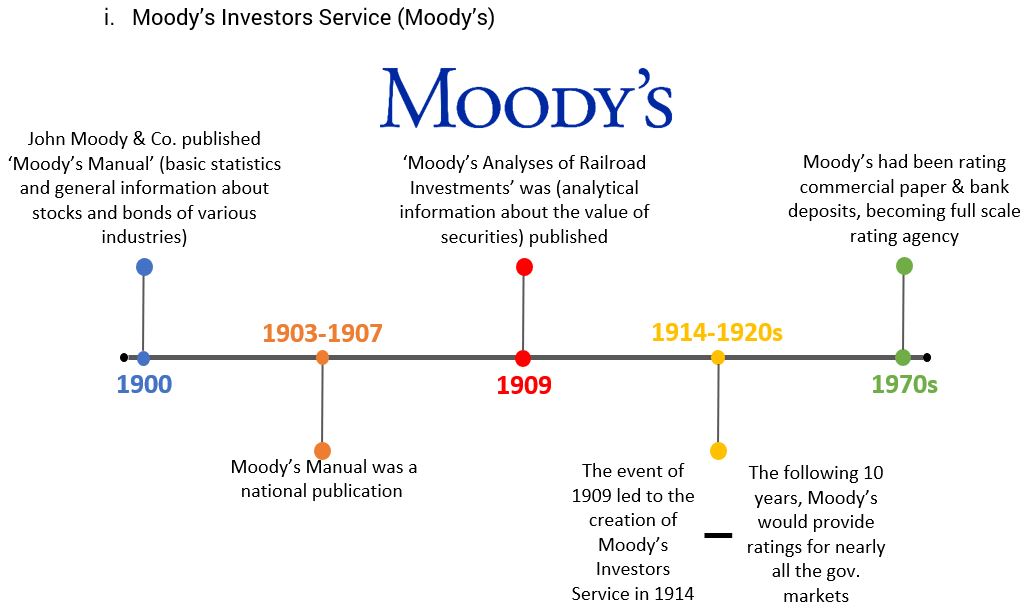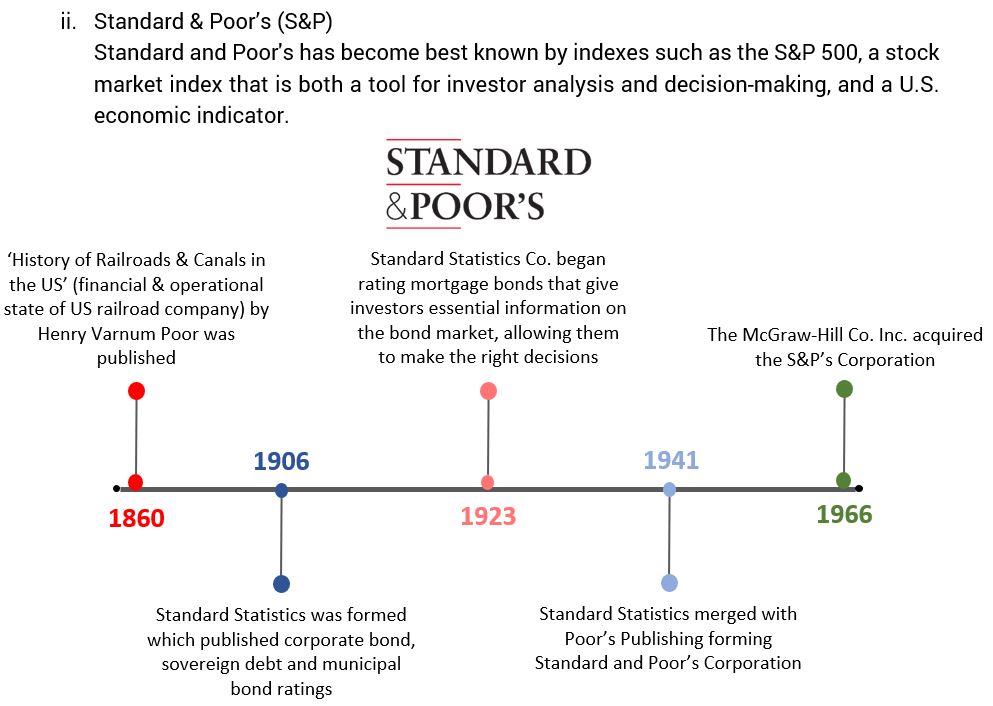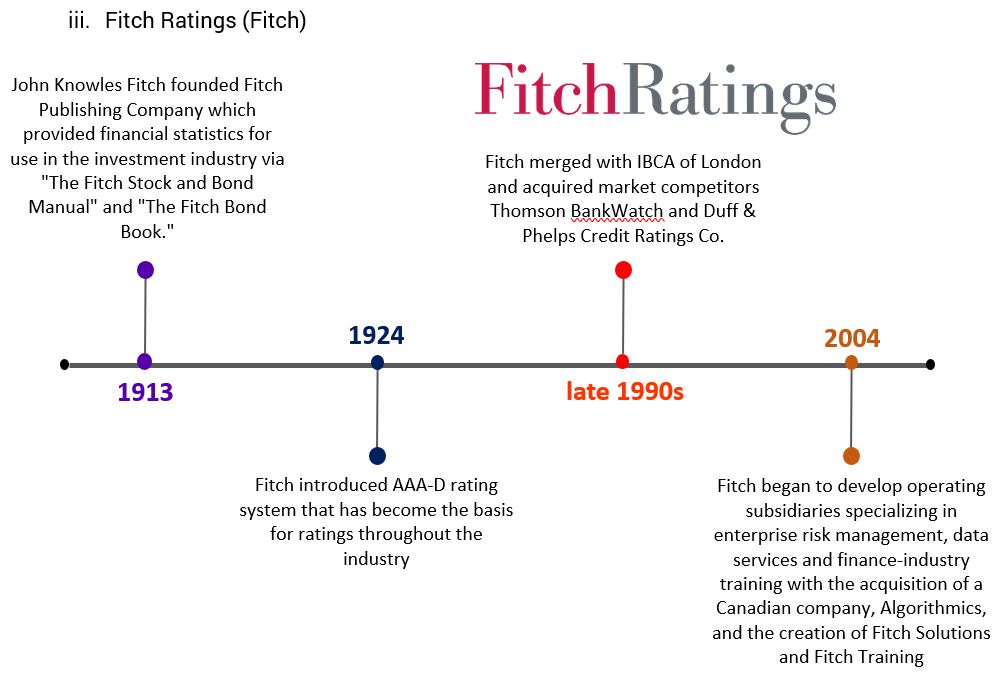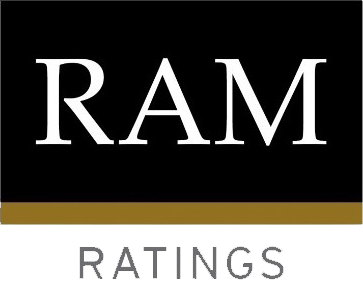
BIX ARTICLE
Credit Rating Agency
Dec 12, 2018
|
15 min read
Featured Posts
Social Bonds Illustrative Use-Of-Proceeds Case Studies Coronavirus
Jul 06, 2020
|
2 min read
Sustainable Banking Network (SBN) Creating Green Bond Markets
Jul 06, 2020
|
2 min read
Why is Inflation Making a Big Comeback After Being Absent for Decades in the U.S.?
Mar 24, 2022
|
7 min read
SC issues Corporate Governance Strategic Priorities 2021-2023
Mar 29, 2022
|
3 min read
Credit rating agencies provide an independent source of information on the credit standing of corporate and other issuers of debt securities. Institutional and individual investors rely on bond rating agencies and their in-depth research to make investment decisions. Rating agencies play an integral role in the investment process and can make or break a company's success in both the primary and secondary bond market. This role is important for all financial systems, arguably especially so in emerging economies when bond markets are in their formative stages.

What is credit rating agency?
There three international top rating agencies control most of the rating business are Standard and Poor’s (S&P), Moody’s Investors Service (Moody’s) and Fitch Ratings. In Malaysia, there are two Securities Commission (SC) Malaysia approved rating agencies – RAM Ratings and Malaysian Rating Corporation Bhd. (MARC). Each agency uses unique letter-based scores to indicate if a debt has a low or high default risk and the financial stability of its issuer. S&P, Fitch, RAM and MARC use ‘AAA’ as their score to a prime grade investment while Moody’s uses ‘Aaa’.
The value of credit ratings for securities has been widely questioned. Hundreds of billions of securities that were given the agencies' highest ratings were downgraded to junk during the financial crisis of 2007–08. Rating downgrades during the European sovereign debt crisis of 2010–12 were blamed by EU officials for accelerating the crisis.
Critics maintain that this rating, outlooking, and watching of securities has not worked nearly as smoothly as agencies suggest. They point to near-defaults, defaults, and financial disasters not detected by the rating agencies' post-issuance surveillance, or ratings of troubled debt securities not downgraded until just before (or even after) bankruptcy.
These include the 1975 New York City fiscal crisis, the 1994 Orange County default, the Asian and Russian financial crises, the 2001 Enron and WorldCom bankruptcies, and especially the subprime mortgage crisis.
The Big Three Credit Rating Agencies
The credit ratings provided by popular rating agencies including Moody's, Standard & Poor's, and Fitch, have become a benchmark for regulation of financial markets, used by various banks and financial institutions in determining the risk premium they will charge on loans and corporate bonds and help provide risk measures for various entities and make it easier for financial market participants to assess and understand the credit risk of the parties involved in the investing process. Not only that, the credit rating agencies provide improved efficiency in the credit markets and allow for more transparency in dealings and standardise the evaluation process.
Credit rating is a highly concentrated industry, with the "Big Three" credit rating agencies controlling approximately 95% of the ratings business. The U.S. Securities and Exchange Commission (SEC) identifies them as National Recognised Statistical Rating Organisation (NRSRO) in 1975.
Nationally Recognized Statistical Rating Organizations
The Dodd-Frank Act mandated the creation of the Office of Credit Ratings ("OCR") in support of the Commission’s mission to protect investors, facilitate capital formation, and maintain fair, orderly and efficient markets. OCR was established in June 2012 and located in New York and Washington, D.C. Jessica Kane serves as the current Director of OCR.
Beginning in 1970, the credit ratings industry began to adopt some important changes and innovations. Previously, investors subscribed to publications from each of the ratings agencies and issuers paid no fees for performance of research and analyses that were a normal part of the development of published credit ratings. As an industry, credit ratings agencies began to recognize that objective credit ratings significantly helped issuers: They facilitated access to capital, by increasing a securities issuer's value in the market place, and decreased the costs of obtaining capital. Expansion and complexity in the capital markets coupled with an increasing demand for statistical and analytical services led to the industry-wide decision to charge issuers of securities fees for ratings services.
In 1975, financial institutions, such as commercial banks and securities broker-dealers, sought to soften the capital and liquidity requirements passed down by the Securities and Exchange Commission (SEC). As a result, nationally recognized statistical ratings organizations (NRSRO) were created. Financial institutions could satisfy their capital requirements by investing in securities that received favourable ratings by one or more of the NRSROs. This allowance is the result of registration requirements coupled with greater regulation and oversight of the credit ratings industry by the SEC. The increased demand for ratings services by investors and securities issuers, combined with increased regulatory oversight, has led to growth and expansion in the credit ratings industry.
History of The Big 3 Rating Agencies



Credit Rating Agency in Malaysia
Domestic credit rating agencies in Malaysia offered the first credit rating of sukuk in 1994, and the world’s first Islamic residential mortgage-backed securities. Malaysia is the first country in the world that requires both corporate bonds and sukuk (Islamic debt instruments) to be rated. The continuing expansion of Islamic financial markets is ensuring that Malaysia is not only leading the development of the sukuk market in terms of total sukuk issuance, but also in terms of innovative sukuk structures.
(The agencies stated are Securities Commission (SC)-recognised credit rating agency upon its fulfilment of requirements set out in the SC's Guidelines on Registration of Rating Agencies)
- RAM Ratings Services Bhd. (RAM)

- RAM Ratings is a wholly owned subsidiary of RAM Holdings Berhad and ultimate shareholders comprise major financial institutions in Malaysia, McGraw-Hill Asian Holdings (Singapore) Pte Ltd and Fitch Ratings Limited;
- Largest credit rating agency in Malaysia and South-East Asia (ASEAN);
- Established in 1990 by the central bank of Malaysia as part of the “institutional infrastructure” to support the development of Malaysia’s bond market;
- RAM rating portfolio encompasses corporates, sovereign nations, financial institutions, insurance companies, project finance and structured finance obligations;
- Rating Agency Malaysia (RAM) became the first credit rating agency to evaluate the creditworthiness of sukuk in 1994;
- RAM is world’s leading rating agency for securities issued under Islamic principles, or sukuk and named Best Rating Agency (South East Asia 2017) by CPI Financial and the Best Islamic Rating Agency award in 2016 by Islamic Finance News (IFN);
- Accredited by the Tokyo Stock Exchange for listings on the Japanese Pro-Bond Market, RAM Ratings also offers ratings on the ASEAN and global rating scales;
- On 26 May 2016, RAM joined the line-up of pioneer credit rating agency signatories to the United Nations-supported Principles for Responsible Investment’s Statement on Environment, Social and Governance (ESG) in Credit Ratings as a way for them to communicate their commitment to a more systematic and transparent incorporation of ESG into credit ratings and analysis; and
- Malaysian Rating Corporation Bhd. (MARC)
.png)
- Established in 1996, MARC’s key rating capabilities are in infrastructure, project and structured finance, given its long-standing track record in rating domestic toll roads, power plants, water assets and ports.
- MARC provides public and private ratings on companies and their debt instruments, including bank loans, senior and subordinated debts, commercial papers, and hybrid debt instruments.
- MARC also covers the securities of a wide range of corporate sectors, including energy, oil and gas, construction, building materials and real estate, commodities, and retail industries.
- MARC also rates financial institutions, state governments and structured finance transactions, and regularly publishes independent research on the domestic bond and sukuk markets, industry trends and economic issues of general interest to the investing public.
- Since its inception, MARC has completed more than 910 ratings of securities cumulatively worth over RM600 billion.
- Effective January 1, 2022, MARC transferred its regulatory license as a credit rating agency with the Securities Commission Malaysia and the Bank Negara Malaysia-accredited External Credit Assessment Institution status to its wholly-owned subsidiary MARC Ratings Berhad.
- MARC, as the parent company, acts as the sole shareholder of the group's subsidiaries, which also include MARC Solutions Sdn Bhd, MARC Data Sdn Bhd, and MARC Learning Sdn Bhd, each providing distinct product offerings.
- MARC Solutions Sdn Bhd provides up-to-date data analytic offerings, and risk framework solutions and advisory, as well as comprehensive assessment of environmental, social and governance (ESG) risks.
- MARC Data Sdn Bhd was incorporated as a private limited company and is the data, analytical and digital hub for MARC.
- Via its subsidiary MARC Learning Sdn Bhd, MARC also offers learning and development solutions to the market primarily related to debt capital markets, risk management, project finance and economics.
Role of Credit Rating Agency
- Capital Markets
- Rating agencies play an integral role in the investment process and can make or break a company's success in both the primary and secondary bond market.
- Provides an independent evaluation of the creditworthiness of debt securities issued by governments and corporations.
- By serving as information intermediaries, CRAs theoretically reduce information costs, increase the pool of potential borrowers, and promote liquid markets.
- Large bond issuers receive ratings from one or two of the big three rating agencies.
- Structured Finance
- Structured finance is typically indicated for borrowers – mostly extensive corporations – who have highly specified needs that a simple loan or other type of conventional financial instrument will not satisfy. In most cases, structured finance involves one or several discretionary transactions to be completed, thus evolved and often risky instruments must be implemented.
- Examples of structured financial transactions are asset-backed securities (ABS), residential mortgage-backed securities (RMBS), commercial mortgage-backed securities (CMBS) and collateralized debt obligations (CDOs).
- Rating agencies focus on the type of pool underlying the security and the proposed capital structure to rate structured financial products.
- The issuers of these products pay rating agencies to not only rate them, but also to advise them on how to structure the tranches.
- Sovereign Debts
- Sovereign borrowers are the largest borrowers in most financial markets.
- May include national governments, state governments, municipalities, and other sovereign-supported institutions.
- The sovereign ratings given by a rating agency shows a sovereign’s ability to repay its debt.
- These issuers borrow money by issuing government bonds and selling them to private investors, either overseas or domestically.
- Governments from emerging and developing markets may also choose to borrow from other governments and international organizations, such as the World Bank and the International Monetary Fund.
Challenges with Credit Rating Agency
- Rating agencies have been liable — at least in US courts — for any losses incurred by the inaccuracy of their ratings only if it is proven that they knew the ratings were false or exhibited "reckless disregard for the truth".
- Rating agencies in Malaysia would be in an unassailable position as long as an effective disclaimer accompanies their rating such as RAM’s publication includes the following clause:
| Selected financial crises | |
|---|---|
| Asian financial crisis, 1997/98 | Credit rating agencies had got emerging markets ‘wrong’ with the Asia, where they were accused of not signalling early enough the problems in Asia, and then of making things worse by downgrading excessively. The behaviour of credit rating agencies accelerated capital inflows after the Asian crisis. As such, BIS, IMF and The World Bank raised anxieties about the credit rating process, particularly about the usefulness of country ratings due to the severe adjustment of sovereign ratings for many emerging market economies. |
| Russian crisis, 1998-2000 | In Russia’s case, credit rating agencies appear to have lagged in anticipating the sequence of events that debt arrears occurred and the markets absorbed new information – downgrading occurred after the event. The failure of Russia to deal with its deteriorating conditions led some hedge funds and leading international banks to announce substantial losses. |
| Mexican crisis, 1994-1995 | The Mexican crisis occurred at the end of 1994, but Mexico was not downgraded until 2/10/1995. While the December 1994 devaluation of the peso rocked the world financial markets, Standard & Poor’s put Mexico’s sovereign debt only a notch below investment grade with a positive outlook. At that time, Mexican paper had been selling as an investment grade since the early 1990s. The Mexican crisis of 1994-95 found credit rating agencies reacting to events rather than anticipating them. |
| European debt crisis, 2010-2011 | The European debt crisis originated when many Eurozone countries found themselves facing increasingly high public debt after the late-2000s financial crisis. From the observation of rating announcements from 2006-2010, rating agencies have not anticipated the macroeconomic weaknesses of European economics consecutive to the financial crisis. |
| United States subprime mortgage crisis, 2007-2010 | Credit rating agencies have come under scrutiny during and after the financial crisis for having given investment-grade ratings to MBSs and CDOs based on risky subprime mortgage loans that later defaulted. Dozens of lawsuits have been filed by investors against the "Big Three" rating agencies |
| Selected high profile crises | |
|---|---|
| New York City's bond rating, 1975 | Standard & Poor’s and Moody’s waited too long to change New York City’s bond rating in 1975. Critics not only charged the two agencies with being slow to downgrade, but also with a complete failure to investigate the city's fiscal problems. |
| The default of the Washington Public Power Supply System’s (WPPSS) Projects 4 and 5 bonds, 1983 | In 1983, Standard & Poor’s and Moody’s were criticized for being too slow in downgrading bonds issued by the WPPSS, despite the awareness of serious difficulties and cost overruns involve with construction plans. Investment grade ratings assigned to WPPSS’ bonds by Moody’s and Standard & Poor’s. from the outset and continuing through a deteriorating situation up until default. |
| Orange County, 1990 | Only a few months before Orange County filed for bankruptcy in December 1994, both Standard & Poor’s and Moody’s gave the county their highest short-term rating for a $600 million taxable note issue. In this regard, rating agencies downgraded the issues only after these problems became public. |
| Enron, 2001 WorldCom, 2002 |
Three major rating agencies had maintained ‘investment grade’ ratings on Enron’s bonds and WorldCom’s bonds until a few days before that company declared bankruptcy. As such, credit rating agencies were criticized for their lack of timeliness in predicting some high-profile bankruptcies. The credit rating agencies were simply too slow in recognizing the weakened financial conditions of these companies |
| Lehman Brothers, 2008 | Lehman Brothers’ bonds were rated ‘A’, an investment grade until the company was declared bankrupt on 15/9/2008. |
Benefits of credit rating agency
- Consumer Level
Agency’s ratings are used by banks to determine the risk premium to be charged on loans and bonds - Corporate Level
- companies must find rating agency to rate their debt if they want to issue a security
- investors decisions on company’s securities usually rely on the ratings
- the ratings are considered more reliable and accurate since rating agency such as Moody’s or RAM have access to a lot of information that is not publicly available
- Country Level
- investors rely on the ratings given by the credit rating agencies to make investment decisions
- country’s good credit rating can help to access high-value international investors
- favourable rating may also attract other forms of investments like foreign direct investments to a country
Conclusion
The development of Malaysia’s bond market requires credible credit rating agencies to provide investors with an objective and impartial opinion on the quality of debt issues. Furthermore, it is crucial that domestic credit rating agencies maintain their credibility and reliability in the eyes of investors and other market participants.
Disclaimer
This report has been prepared and issued by Bond and Sukuk Information Platform Sdn Bhd (“the Company”). The information provided in this report is of a general nature and has been prepared for information purposes only. It is not intended to constitute research or as advice for any investor. The information in this report is not and should not be construed or considered as an offer, recommendation or solicitation for investments. Investors are advised to make their own independent evaluation of the information contained in this report, consider their own individual investment objectives, financial situation and particular needs and should seek appropriate personalised financial advice from a qualified professional to suit individual circumstances and risk profile.
The information contained in this report is prepared from data believed to be correct and reliable at the time of issuance of this report. While every effort is made to ensure the information is up-to-date and correct, the Company does not make any guarantee, representation or warranty, express or implied, as to the adequacy, accuracy, completeness, reliability or fairness of any such information contained in this report and accordingly, neither the Company nor any of its affiliates nor its related persons shall not be liable in any manner whatsoever for any consequences (including but not limited to any direct, indirect or consequential losses, loss of profits and damages) of any reliance thereon or usage thereof.
YOU MAY ALSO LIKE
ARTICLE
Dec 01, 2025
|
4 min read
ARTICLE
Nov 04, 2025
|
4 min read
ARTICLE
Oct 16, 2025
|
5 min read
ARTICLE
Sep 03, 2025
|
4 min read


